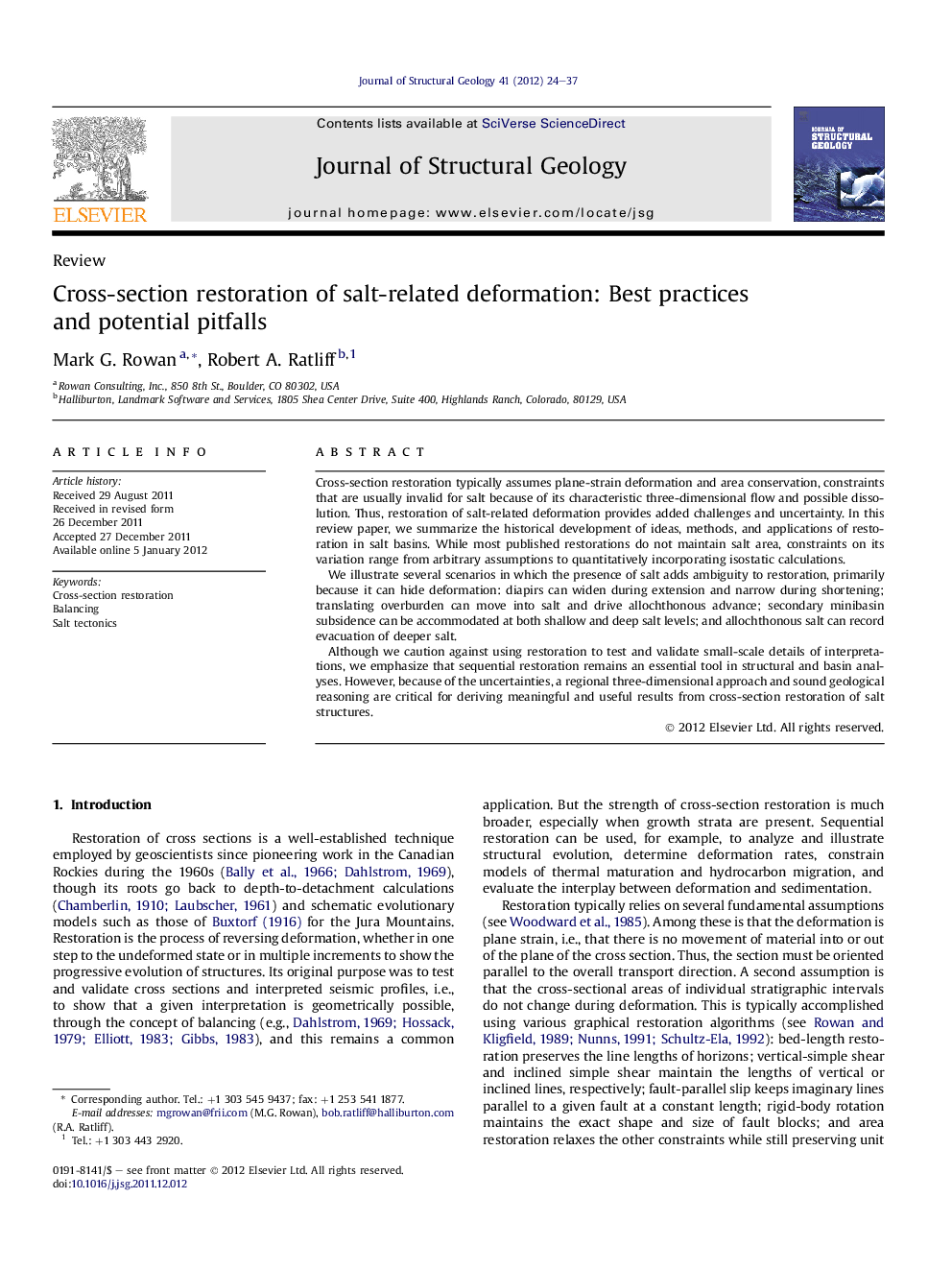| Article ID | Journal | Published Year | Pages | File Type |
|---|---|---|---|---|
| 4733242 | Journal of Structural Geology | 2012 | 14 Pages |
Cross-section restoration typically assumes plane-strain deformation and area conservation, constraints that are usually invalid for salt because of its characteristic three-dimensional flow and possible dissolution. Thus, restoration of salt-related deformation provides added challenges and uncertainty. In this review paper, we summarize the historical development of ideas, methods, and applications of restoration in salt basins. While most published restorations do not maintain salt area, constraints on its variation range from arbitrary assumptions to quantitatively incorporating isostatic calculations.We illustrate several scenarios in which the presence of salt adds ambiguity to restoration, primarily because it can hide deformation: diapirs can widen during extension and narrow during shortening; translating overburden can move into salt and drive allochthonous advance; secondary minibasin subsidence can be accommodated at both shallow and deep salt levels; and allochthonous salt can record evacuation of deeper salt.Although we caution against using restoration to test and validate small-scale details of interpretations, we emphasize that sequential restoration remains an essential tool in structural and basin analyses. However, because of the uncertainties, a regional three-dimensional approach and sound geological reasoning are critical for deriving meaningful and useful results from cross-section restoration of salt structures.
